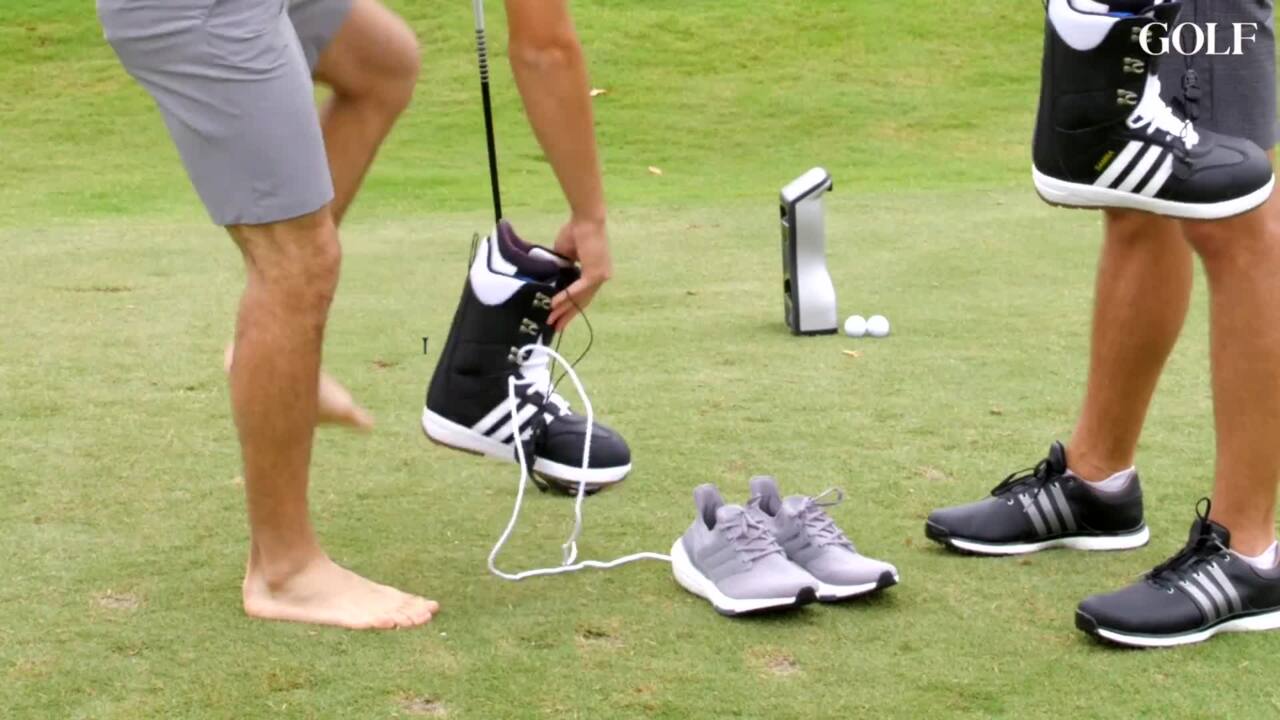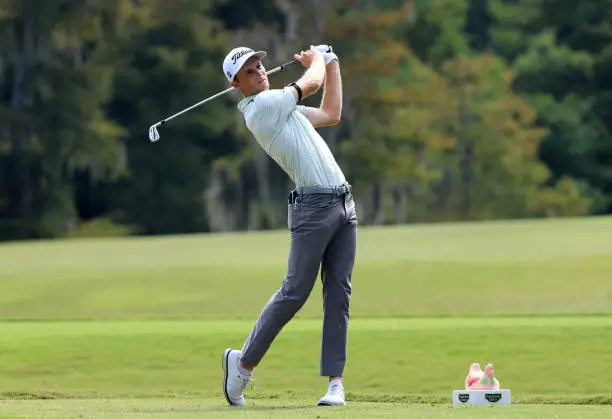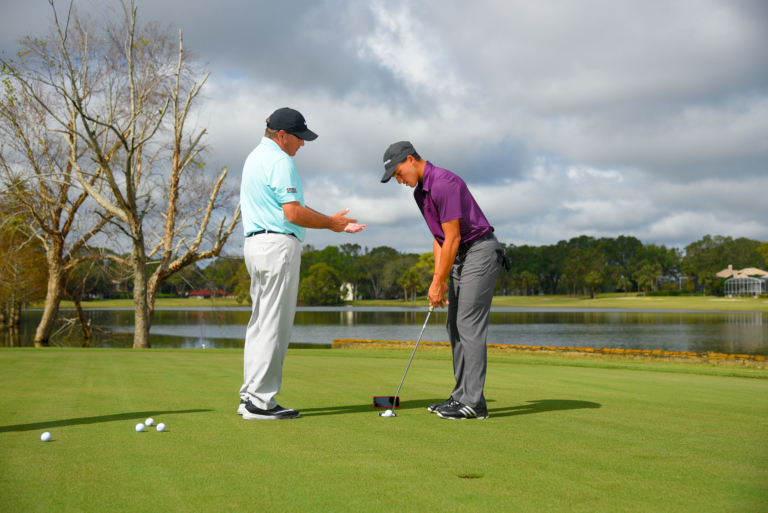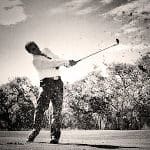Significance Of Golf Shoes For Fitting
When it comes to getting a club fitting, many golfers overlook the importance of wearing proper golf shoes. However, the significance of golf shoes for fitting should not be underestimated. Your choice of footwear can have a significant impact on the fitting process, influencing factors like alignment, balance, and stability. In this article, we will delve into the role of footwear in golf and explore the impact that shoes can have on your club fitting experience.
Understanding The Role Of Footwear In Golf
Golf is a sport that requires utmost precision, and every aspect of your equipment plays a vital role in achieving optimal performance. Your footwear is no exception. Golf shoes are specifically designed to provide the necessary support and stability on the course, enabling you to maintain proper balance throughout your swing. Unlike regular sneakers or athletic shoes, golf shoes feature unique features that cater to the demands of the game.
One of the key distinctions of golf shoes is the presence of soft spikes or cleats on the sole. These spikes help golfers maintain traction during the swing, preventing slippage and enhancing stability. Additionally, golf shoes often feature materials and designs that offer better lateral support, helping you maintain proper foot positioning throughout your swing, even on uneven terrain.
Impact Of Shoes On The Fitting Process
The fitting process aims to optimize your equipment to suit your individual swing characteristics, body mechanics, and personal preferences. Every detail matters, and your choice of footwear can significantly influence the accuracy and effectiveness of the fitting session. The following factors highlight the impact of shoes on the fitting process:
- Alignment: Proper alignment is crucial in golf, as it affects your aim and ball flight. Wearing golf shoes with a stable base and well-defined arch support helps maintain proper alignment throughout your swing, improving your accuracy during the fitting process.
- Balance: Maintaining a stable and balanced stance is essential for a consistent swing. Golf shoes provide the necessary stability and grip, preventing unnecessary foot movement during the fitting. This stability allows the fitter to evaluate your swing mechanics accurately and make appropriate adjustments to your equipment.
- Weight Distribution: Golf shoes are designed to distribute your weight evenly on your feet, preventing excessive pressure or strain on any particular area. Proper weight distribution promotes a more fluid and natural swing motion, allowing the fitter to assess and optimize your equipment based on your true swing mechanics.
- Comfort: A comfortable golfer is a confident golfer. The right pair of golf shoes ensures that you are comfortable and at ease during the fitting process. Discomfort or pain from ill-fitting or inappropriate footwear can distract you from focusing on your swing, potentially leading to inaccurate fitting results.
By wearing golf shoes during your club fitting, you provide yourself with the best possible conditions to achieve accurate results. It is a small but significant step towards optimizing your golf equipment and enhancing your performance on the course. So, next time you head for a club fitting, don’t forget to slip on your trusty pair of golf shoes.
Credit: us.dunlopsports.com
Factors Affecting Club Fitting
Factors affecting club fitting include body type, swing mechanics, skill level, and personal preferences. While not necessary, wearing golf shoes to club fitting can provide better stability and traction, allowing you to better assess your swing and make proper adjustments.
Body Posture And Alignment
When it comes to club fitting, one of the key factors to consider is your body posture and alignment. The way you set up to the ball can greatly affect the outcome of your swing and ultimately, the clubs that best suit your game. Proper body posture and alignment ensure that you maintain a consistent swing plane and strike the ball with optimal power and accuracy.
During a club fitting session, a professional will assess your body posture and alignment to determine if any adjustments need to be made. They will analyze your stance, grip, and overall setup to identify any potential issues that may be affecting your swing. By making necessary adjustments to your body posture and alignment, you can optimize your swing mechanics and improve your overall game.
Swing Mechanics And Club Interaction
Another crucial consideration in the club fitting process is the interaction between your swing mechanics and the clubs you use. Each individual has a unique swing style and tempo, and it is essential to find clubs that are compatible with your specific swing characteristics.
The club fitting professional will evaluate your swing mechanics, including your swing speed, swing path, and release point. They will analyze how the club interacts with your swing to determine the optimal club specifications for your game. By matching the right equipment to your swing mechanics, you can maximize your swing efficiency and achieve better results on the course.
Additionally, the club fitting process takes into account other swing factors such as the angle of attack, ball flight, and impact location. These factors can provide valuable insights into the adjustments that need to be made to your equipment. By addressing these aspects during the club fitting, you can ensure that the clubs you select are perfectly suited to your swing mechanics, resulting in improved performance and consistency.
How Golf Shoes Affect Performance
When it comes to optimizing your golf performance, every detail matters – including your choice of footwear. Golf shoes play a significant role in how well you can perform on the course, and this extends to your club fitting session as well. In this article, we will dive into the specific ways in which golf shoes affect your performance during club fitting, giving you a better understanding of why wearing them is crucial.
Stability During The Swing
Golf requires a stable base to execute powerful and accurate swings. Without the right stability, there is a higher probability of balance issues, resulting in inconsistent shots. This is where golf shoes come into play.
Golf shoes are specifically designed to provide stability during the swing. They feature a combination of a sturdy outer sole and spikes or specialized traction patterns that help grip the ground effectively. By firmly planting your feet, golf shoes ensure a solid foundation, allowing you to maintain balance throughout your swing, even when making forceful movements.
Connection With The Ground
Another critical aspect affected by golf shoes during club fitting is the connection you establish with the ground. By wearing golf shoes, you create a link between your body and the course, enabling you to feel the ground beneath you and make the necessary adjustments in your stance and weight distribution.
A proper connection with the ground is vital for achieving consistency in your swings and generating power efficiently. The grip provided by golf shoes allows you to push off the ground, generating rotational forces and maximizing the potential of your swing. This connection ultimately translates into better club knowledge and fitting accuracy when testing different models and configurations.
Furthermore, the connection provided by golf shoes allows golfers to have a reliable feel for how different club designs and adjustments affect their swings. Having this tactile feedback aids in assessing the performance of each club accurately and assists the club fitter in making informed recommendations based on your individual swing characteristics.
To summarize, wearing golf shoes during your club fitting session is highly recommended due to the clear benefits they offer. They provide stability during the swing, ensuring balance and consistency, and establish a strong connection with the ground, enhancing your ability to generate power and make accurate adjustments. By incorporating golf shoes into your club fitting experience, you increase the chances of finding the perfect club setup that maximizes your performance on the course.
Golf Shoes Vs. Regular Footwear
When it comes to getting a club fitting, many golfers wonder whether they should wear golf shoes or regular footwear. Golf shoes are specifically designed for the sport, providing enhanced stability and grip on the course. Regular footwear, on the other hand, may not offer the same level of support and traction. In this blog post, we will explore the differences between golf shoes and regular footwear and discuss their impact on club fitting accuracy.
Differences In Design And Function
Golf shoes are designed with the needs of golfers in mind. They typically feature spikes or cleats on the sole, which provide traction and prevent slipping during the swing. The uppers of golf shoes are made from materials that offer support and stability to the feet. Some golf shoes also come with waterproofing technology, keeping your feet dry on wet courses.
On the other hand, regular footwear is not specifically designed for golf. While they may offer comfort and style, they may lack the necessary features for optimal performance on the golf course. Regular sneakers or athletic shoes may not provide the same level of stability and traction as golf shoes. Their soles are often designed for different surfaces and may not provide the necessary grip on the grass.
Impact On Club Fitting Accuracy
The choice of footwear can have a significant impact on the accuracy of your club fitting. When you wear golf shoes during your fitting session, you can experience a greater connection to the ground, allowing for better weight transfer and stability. The spikes or cleats on golf shoes help dig into the grass, preventing any unwanted slipping or sliding during your swing.
On the other hand, regular footwear may not provide the same level of stability and traction. Without proper grip, your feet may shift or slide during the swing, affecting your balance and potentially leading to inaccurate club fitting measurements.
In addition, golf shoes often have a firmer sole compared to regular footwear. This firmer sole provides better support and allows for a more solid base, helping you maintain a consistent swing motion. It also helps in transferring energy from your body to the club, thus enhancing swing efficiency.
Wearing golf shoes during your club fitting session can provide a more accurate representation of your actual swing mechanics, allowing the fitter to make precise adjustments to your equipment.
Conclusion
In conclusion, wearing golf shoes to your club fitting session can greatly enhance the accuracy and effectiveness of the fitting process. The specific design and functionality of golf shoes are tailored to the needs of golfers, providing enhanced stability, traction, and support. By wearing golf shoes, you can ensure that the measurements taken during the fitting accurately represent your swing mechanics, resulting in better-fitted clubs and improved performance on the course.
Matching Golf Shoes To Club Fitting
When it comes to club fitting, every detail matters. From the grip size to the shaft flex, each component plays a crucial role in optimizing your swing and improving your game. But have you ever wondered about the role of golf shoes in the club fitting process? While many golfers may overlook this aspect, wearing the right golf shoes can actually make a significant difference in your club fitting experience and ultimately, your overall performance on the course.
Advantages Of Wearing Golf Shoes
Wearing proper golf shoes during your club fitting session can provide you with several advantages that shouldn’t be ignored. Here are a few noteworthy benefits:
- Stability: Golf shoes are designed with traction-enhancing soles that provide a solid grip on the ground. This increased stability can greatly impact your swing mechanics, ensuring a more balanced and controlled motion.
- Alignment: The outsoles of golf shoes often feature alignment features such as spikes or cleats. These elements assist in maintaining proper foot alignment during the swing, which helps with consistent contact and accuracy.
- Power transfer: Optimal power transfer is essential for generating clubhead speed and achieving maximum distance. Golf shoes typically have a rigid sole that facilitates better energy transfer from your legs to the ground, resulting in more efficient swings.
- Comfort: Club fitting sessions can often take a considerable amount of time, involving multiple swings and adjustments. Wearing golf shoes that provide cushioning, arch support, and ample room for your feet can significantly enhance overall comfort, reducing fatigue and allowing you to focus more on your swing.
Considerations For A Precise Fit
While the advantages of wearing golf shoes for club fitting are clear, it is equally important to ensure a precise fit for optimal results. Here are a few considerations to keep in mind:
- Sizing: Proper shoe sizing is crucial to prevent discomfort and potential foot-related issues. Make sure to measure your feet accurately and consult the shoe manufacturer’s size chart to find the right fit.
- Width: Different golf shoe models come in various widths to accommodate different foot shapes. Choosing the appropriate width can ensure better stability and allow for natural foot movement during the swing.
- Support: Look for golf shoes that offer ample support for your arches and ankles. This will help minimize the risk of injuries and provide added stability throughout your club fitting session and during your rounds on the course.
- Try before you buy: Whenever possible, try on golf shoes before making a purchase. Walk around, simulate a swing, and assess the overall comfort and fit. This hands-on approach will allow you to make an informed decision based on your personal preferences and feel.
What To Expect During Club Fitting
During club fitting, you can expect a thorough analysis of your swing, measurements of your body and swing characteristics, and recommendations on the best club specifications for your game. It is not necessary to wear golf shoes during club fitting, as the focus is on club performance and fitting, rather than actual gameplay.
Steps Involved In A Professional Fitting
Club fitting is an essential part of improving your golf game and enhancing your overall performance on the course. When you opt for a professional fitting, you can expect a series of steps designed to analyze your swing and help you find the right clubs for your game. Here is a breakdown of the typical steps involved during a club fitting session:
- Initial assessment: The fitting expert will start by getting to know you and your game. They will ask you questions about your playing style, strengths, weaknesses, and any specific goals you have for your game improvement. This information will help them tailor the fitting process to your individual needs.
- Swing analysis: Next, the fitter will use advanced technology, such as launch monitors and high-speed cameras, to analyze your swing. They will gather data on important parameters like clubhead speed, ball speed, launch angle, spin rate, and more. This analysis will provide valuable insights into your swing characteristics and help determine the optimal club specifications for you.
- Club selection: Based on the data collected and your individual preferences, the fitter will recommend different club options for you to try. This will include various clubhead models, shaft options, and grip selections. The fitter will guide you through the process, explaining the features and benefits of each option to help you make an informed decision.
- Testing and adjustments: After selecting the initial set of clubs, you will have the opportunity to hit shots with them. The fitter will assess your performance with each club and make any necessary adjustments to optimize their performance. This may involve tweaking the loft, lie angle, shaft length, or other club specifications to ensure a better fit for your swing.
- Validation and fine-tuning: Once the initial adjustments are made, the fitter will continue to evaluate your swing and performance. They may fine-tune the club specifications further, making incremental changes to achieve the best possible combination of distance, accuracy, and consistency for your game.
- Final selection and customization: At the end of the fitting session, you will have a clear understanding of the clubs that suit you best. The fitter will work with you to finalize your club selection and provide options for customization, such as grip size, shaft flex, or even custom clubhead designs if desired.
How Attire Influences The Session
Your attire plays a significant role in a club fitting session, as it can influence your swing mechanics and ultimately affect the fitting results. It is important to wear appropriate golf attire that allows for ease of movement and proper body alignment. Here are some considerations regarding attire during a club fitting session:
- Wear golf shoes: Golf shoes provide essential stability and traction during the swing, allowing you to maintain balance and generate power efficiently. Wearing golf shoes to your fitting session will help replicate the conditions on the course accurately and provide a more accurate assessment of your swing.
- Avoid baggy clothing: Loose and baggy clothing can restrict your range of motion and hinder your ability to swing freely. It is best to wear well-fitted attire that allows for a full range of motion, especially in the shoulders and hips.
- Choose comfortable clothing: Fitting sessions can be physically demanding, with numerous swings and movements. Wearing comfortable clothing made from breathable materials will help you stay focused and perform at your best throughout the session.
- Consider layers: Depending on the climate and location of your fitting, it is wise to dress in layers that can be easily added or removed. This way, you can adapt to temperature changes and ensure your comfort throughout the process.
- Showcase your usual golf attire: If you typically wear specific pieces of clothing or accessories on the course, it is a good idea to wear them during the fitting session. This will help the fitter evaluate and adjust the club specifications based on how you would normally set up to hit a shot.
By considering these attire guidelines, you can ensure that your club fitting session is optimized for accurate results and an enhanced overall experience. Remember, a well-fit club can make a significant difference in your game, so it is worth investing time and effort to find the perfect match for your swing.
Preparing For Your Fitting Appointment
Preparing for your fitting appointment is essential to ensure that you make the most out of the session. While many golfers focus on bringing their clubs and other equipment, the question of whether to wear golf shoes to a club fitting often arises. In this blog post, we will discuss the importance of selecting the right golf shoes and other clothing considerations when preparing for your fitting appointment.
Selecting The Right Golf Shoes
When it comes to club fitting, your choice of golf shoes can have a significant impact on the accuracy and consistency of your swing. Golf shoes are specially designed to provide stability, traction, and the right amount of flexibility during your swing. This is why it is crucial to select the right pair of golf shoes before your fitting appointment.
Here are a few factors to consider when selecting the right golf shoes:
- Comfort: Look for golf shoes that offer excellent cushioning, arch support, and a snug fit. Remember, you will be spending a considerable amount of time on your feet, so comfort is key.
- Stability: Opt for golf shoes that provide stability and prevent your feet from sliding during your swing. Look for features such as wide bases and sturdy outsoles.
- Traction: Good traction is essential to maintain balance and prevent slipping, especially on wet or uneven surfaces. Look for golf shoes with effective traction systems, such as spikes or cleats.
- Flexibility: Golf shoes should offer the right balance of stability and flexibility. They should allow your feet to move naturally while maintaining stability during the swing.
By selecting the right golf shoes, you can optimize your performance during your fitting appointment and get accurate feedback on your swing mechanics and club specifications.
Other Clothing Considerations
In addition to golf shoes, there are other clothing considerations to keep in mind when preparing for your fitting appointment. While comfort and freedom of movement are essential, it’s also necessary to wear attire that allows the fitter to observe your body movements and provide accurate advice.
Here are a few clothing considerations to keep in mind:
- Appropriate attire: Wear golf attire that adheres to the club’s dress code. This typically includes collared shirts, tailored shorts or pants, and clean, presentable attire. Avoid wearing clothes that are too loose or restrictive, as they can hinder your swing.
- Layering options: Depending on the weather, it may be helpful to wear layers that can be easily removed or added as needed. This allows you to stay comfortable and focused during the fitting session, regardless of any changes in temperature.
- Body movement: Avoid wearing excessively baggy clothing that may obstruct the fitter’s view of your body movements. Opt for clothing that fits well and allows the fitter to evaluate your swing accurately.
By considering these clothing aspects, you can ensure that you are comfortable and appropriately dressed for your club fitting, enabling the fitter to assess your swing and recommend the right club specifications for you.
Ensuring Your Gear Complements The Fit
When it comes to getting your clubs fitted, it’s not only about having the right equipment but also about ensuring your gear complements the fit. One important aspect is the choice of footwear.
How To Test Your New Club Fit
Once you have gone through the process of getting your clubs fitted, it’s essential to test your new club fit properly. Here’s how you can do it:
- Head to your favorite driving range or golf course to get a feel for your new clubs.
- Pay attention to the contact and trajectory of the ball. Look for improvements in distance, accuracy, and consistency.
- Experiment with different swings and shot types to gauge how well the clubs perform in different situations.
- Take note of any adjustments or tweaks that may be needed based on your performance.
Adjusting To Your Equipment And Attire
Once you have found the perfect club fit, it’s important to make any necessary adjustments to both your equipment and attire. This ensures that everything works together seamlessly. Here are a few tips for adjusting to your new club fit:
- Get used to the weight and feel of your new clubs by practicing regularly. This will help you develop muscle memory and improve your swing consistency.
- Consider getting a new golf bag that can accommodate your fitted clubs properly. A well-fitted bag will protect your equipment and make it easier to transport.
- Check your golf shoes to ensure they are comfortable and provide the necessary support. Golf shoes with spikes can provide extra traction, especially on wet or uneven terrain.
- Wear appropriate golf attire that allows for a full range of motion. Opt for clothes made from breathable and moisture-wicking materials to keep you comfortable on the course.
By following these steps, you can ensure that your gear complements the fit of your new club and maximize your performance on the golf course.
Frequently Asked Questions For Should I Wear Golf Shoes To Club Fitting
Should I Wear Golf Shoes For Club Fitting?
No, it is not necessary to wear golf shoes for club fitting. During club fitting, the focus is on analyzing your swing and finding the right equipment, not on your footwear. Wear comfortable shoes that allow you to move freely and maintain balance.
Save your golf shoes for the course.
Conclusion
Wearing golf shoes during a club fitting session can greatly enhance your overall experience and provide you with better feedback. The stability, grip, and comfort offered by these shoes allow you to maintain the correct posture, generate power, and make accurate swings.
Additionally, the shoe’s design promotes better weight transfer and balance, further improving your performance on the course. So, don’t hesitate to slip on those golf shoes before your next club fitting session and reap the benefits they offer.






 Subscribe to Golf Review Worlds
Subscribe to Golf Review Worlds 